I met the family who lived next door to Auschwitz – the horrors of The Zone of Interest isn’t the full story
The Oscar winning film by Jonathan Glazer tells the chilling story of Rudolf Höss who by day oversees the gassing of 10,000 people and by night goes home to his villa next door for dinner with his wife and children. Author Thomas Harding met Höss’s daughter and discovered the terrifying truth about what really happened in that family home...
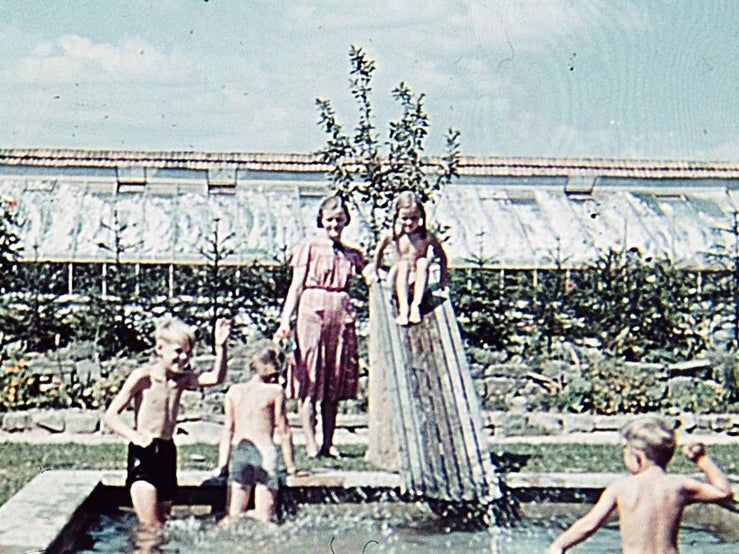
It was a chilly night in October 2023 when I took my seat for a preview screening of The Zone of Interest – the film about Rudolf Höss, the commandant of Auschwitz who lived next to the camp with his family. It was a subject I knew a fair bit about.
As an author and biographer, I’ve spent many years researching the Höss family. I was the first person to interview the commandant’s daughter and visited Auschwitz with members of his family: his daughter-in-law and grandson.
I had unearthed dozens of archives and read scores of witness statements and memoirs. The result was a bestselling book Hanns and Rudolf published 10 years ago, which won the Wingate Prize literary award.
I was a little nervous. Would the filmmakers get the details right? Would Höss be represented as he really was?
I first came across the name Rudolf Höss in 2006 when I heard the eulogy for my great-uncle Hanns Alexander. Much was familiar, Hanns was a German Jew who had fled Berlin in the mid-1930s. In London, he had joined the British army and spent the war fulfilling menial jobs. At the conflict’s end, he was sent to Bergen-Belsen after the camp was liberated.
But then there was a line that was totally new to me: 10 months after the war’s end, Hanns had tracked down and arrested Rudolf Höss. After being interrogated by my great-uncle, Höss was a witness at the Nuremberg Trial becoming the first senior Nazi to admit to the horrors of the Final Solution. He was then taken to Poland, where he was put on trial and sentenced to death.
I spent the next six years researching this fascinating story. I travelled to Auschwitz and visited archives in the USA, France, Britain, Israel, and Luxembourg. I collected information about my uncle from my family and gathered his military records.
I discovered how Hanns’s hunt for Höss had taken him to Berlin, Hamburg, Heide, and then to Flensburg close to the Danish border when, on 11 March 1946, he and a group of British soldiers found their man in an old barn in the hamlet of Gottrupel. But the more I researched, the more I wanted to understand the story from the Kommandant’s point of view. On a typical day, he oversaw the gassing of ten thousand people and then go home to his villa and sit down with his family for dinner. Why did he do it? And how had he lived with himself?
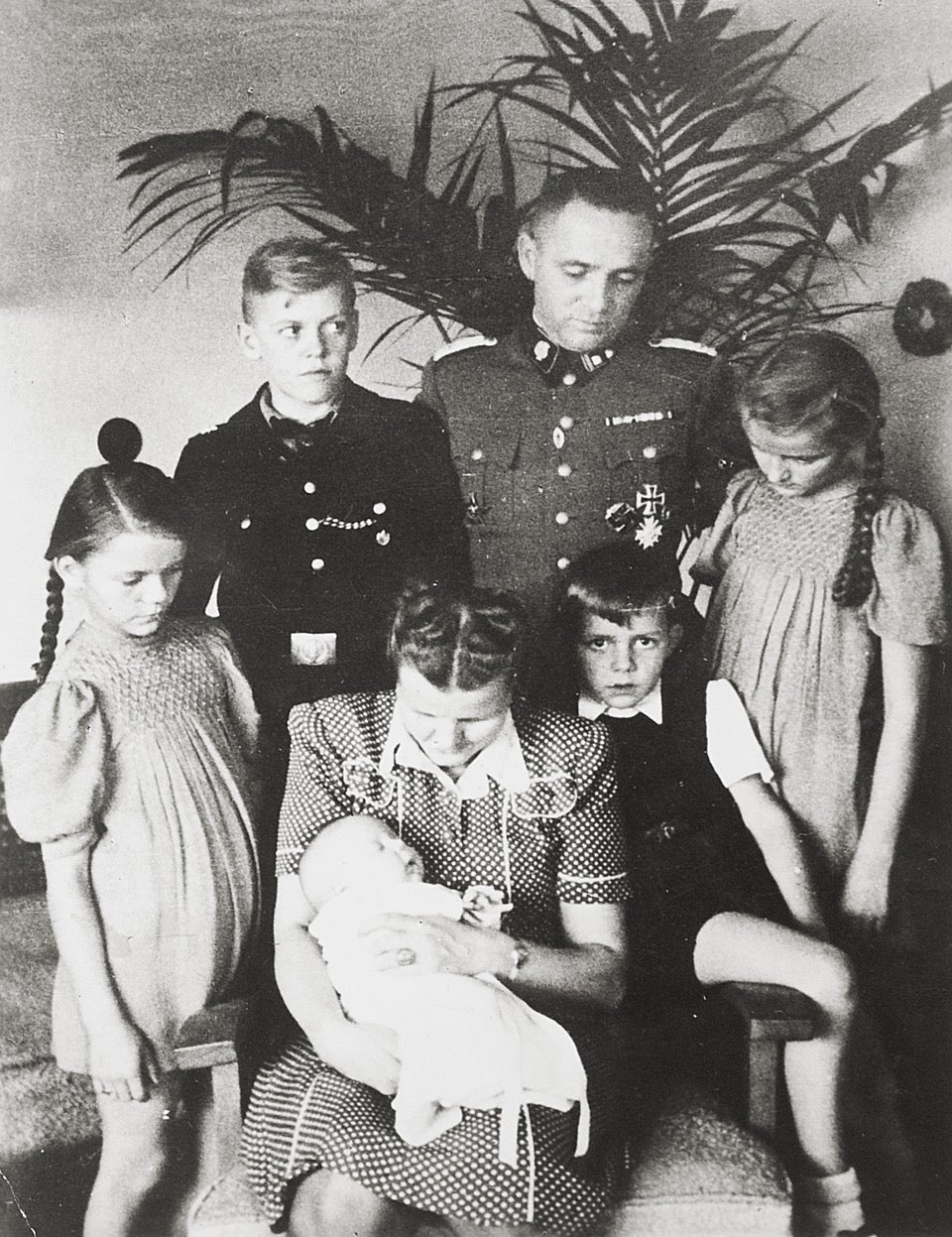
At the time, no member of his family had gone on the record. And then I saw an article by an Israeli journalist about Rudolf Höss’s grandson Rainer, who was unemployed and living near Ludwigsburg in Germany. I contacted the journalist, and we agreed I would accompany them on a trip to Auschwitz.
A few weeks later, I was walking under the camp’s wrought-iron gate emblazoned with the words Arbeit Macht Frei (work sets you free). Also with us was Rainer’s mother Irene whose ex-husband Hans-Jürgen was the Kommandant’s son. He had lived here between the ages of three and six, too young to remember many details. As we walked along the cobbled path, we saw the barbed wire against which prisoners had thrown themselves to end their lives. The wall where thousands had been shot. The red-brick barracks where they had been held and tortured.
“I did not know any of this when I married Hans-Jurgen,” Irene said, crying so hard it was difficult to understand what she was saying. A 100 metres further on, we came to a wall. On the other side was the two-storey villa with a large garden where the Höss family had lived.and which was featured in ‘The Zone of Interest’. The Kommandant’s wife Hedwig had called it ‘paradise’. Looking at the villa, I asked Irene if her mother-in-law Hedwig knew about the killings. “Of course, of course,” Irene said softly, “she lived there for years.”
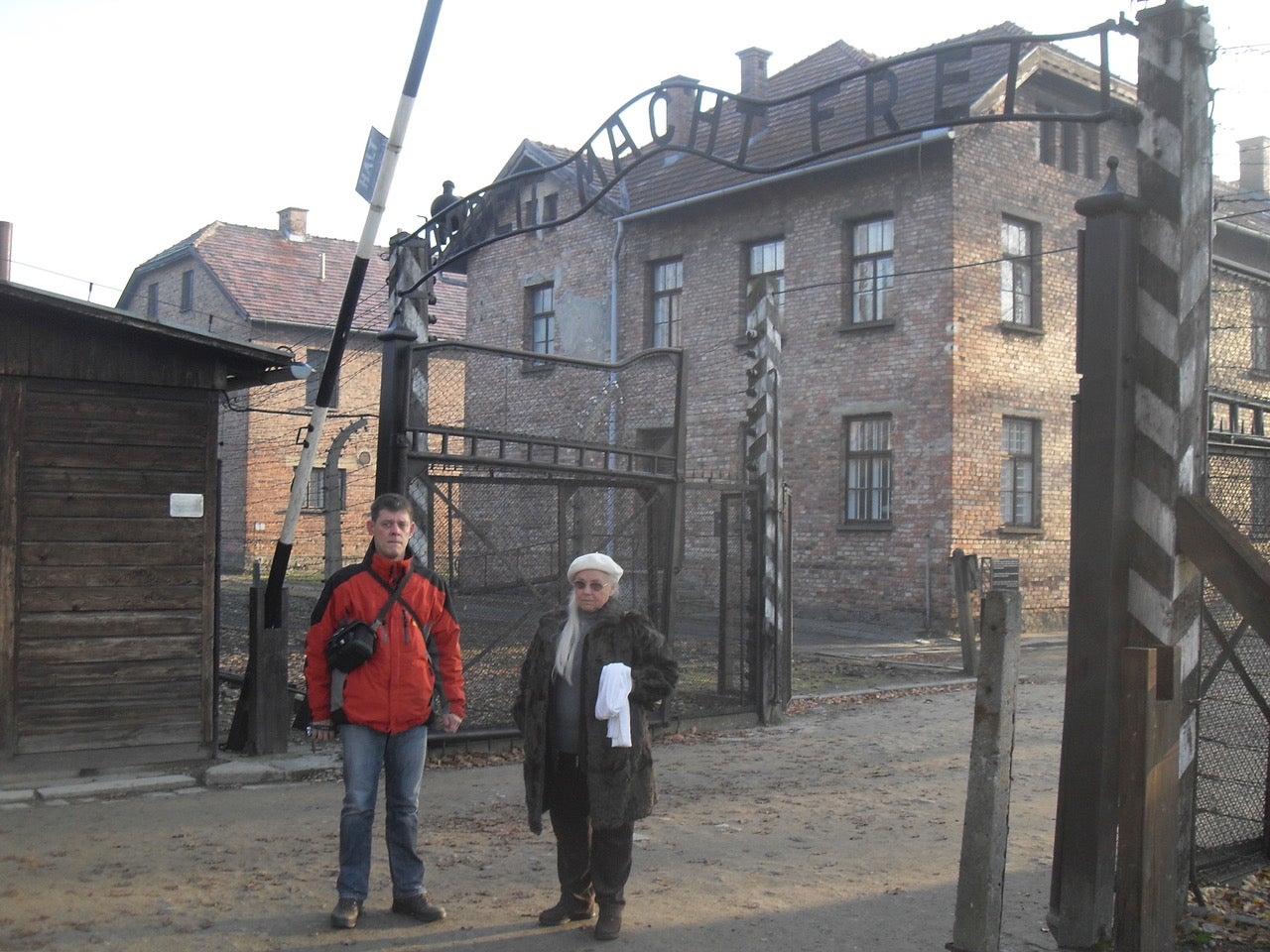
We came to a low round-roofed building. This was the old crematoria where Höss had first experimented with Zyklon B, the cyanide-based pellets which were used to gas the prisoners. “What my grandfather has done. It is so bad. So bad,” said Rainer, who was also crying. “I have studied this, but to be here, it is much worse.”
Next to the crematoria was a wooden gallows. It was here that the commandant was finally hanged for his war crimes in April 1947. Rainer turned to me and said matter-of-factly, “If I knew where my grandfather was buried, I would piss on his grave.”
Shortly after my trip to Auschwitz, I learned that Rudolf Höss’s daughter Brigitte was still alive and had settled near Washington DC. In the 1950s, she had been working in Spain as a model for Balenciaga when she met an Irish American engineer. The couple married in 1961, and after a period living in Asia and the Middle East, they moved to Washington DC. It was a chance for Brigitte to start over.
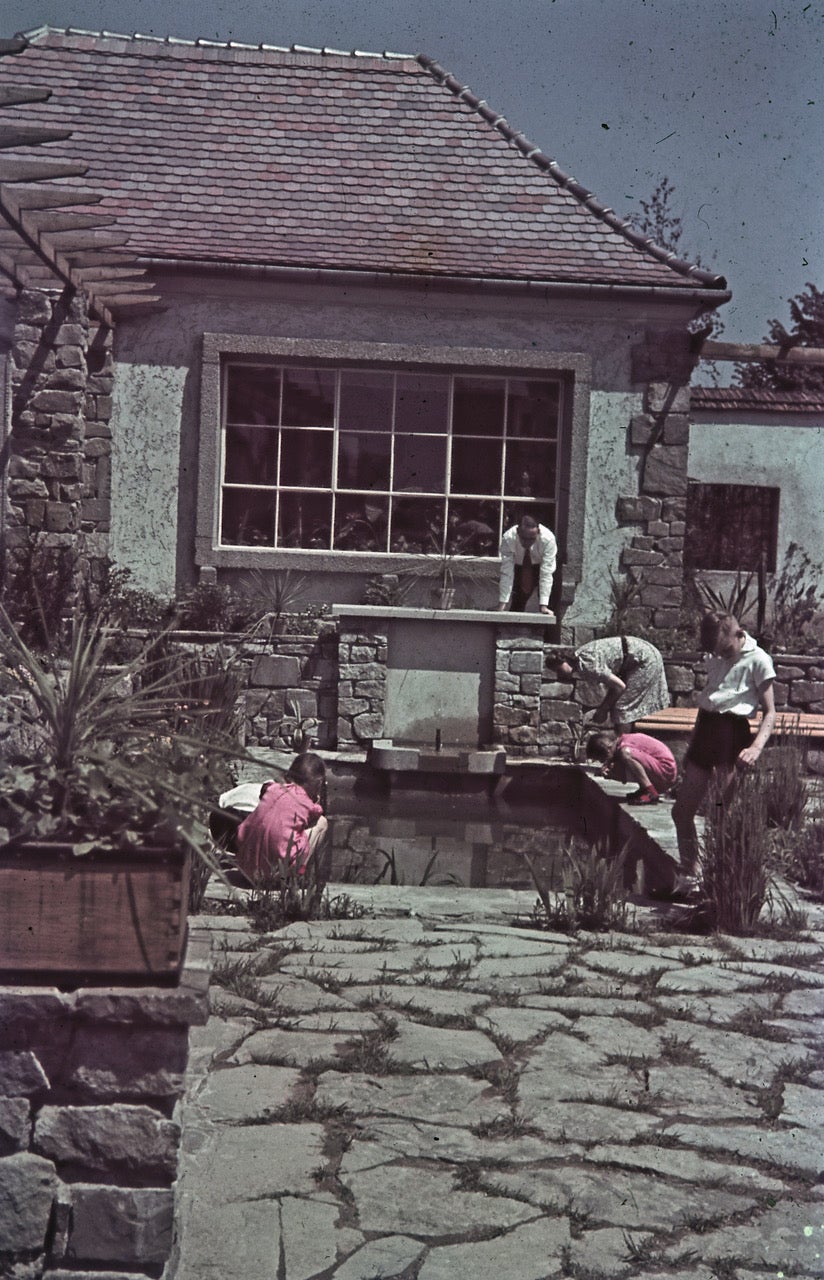
She was the one person who could tell me what it had been like living next door to the Auschwitz camp – and, more to the point, what Rudolf was really like? It took me three years to persuade Brigitte to speak. Every time we made an agreement to meet, some problem emerged. “I am too tired,” she would say. “I can’t talk about this now. Maybe next week.”
Finally, we had a firm date. Remembering that she spent time in Bavaria, on my way to see her, I chose a rich chocolate gateau and a few minutes later I was ringing her doorbell in the suburbs of the nation’s capital. I wondered if her neighbours – senators, lobbyists, journalists – knew who they were living next to.
In front of me was a short elderly woman with long grey hair. I could tell she was going to tell me again that this was not a good time. “This is for you,” I said, showing her the cake. “Ah, okay,” she smiled, and finally, she let me in.
Her house was dark and gloomy, the curtains all closed. Through the cluttered living room and into a small den, she sat down and pointed me towards a worn armchair. A television set stood nearby, the weatherman was calling for snow. Between us stood a Christmas tree. “The decorations were made by my mother,” she told me. Her mother, Hedwig, the wife of the commandant. History suddenly felt very close.
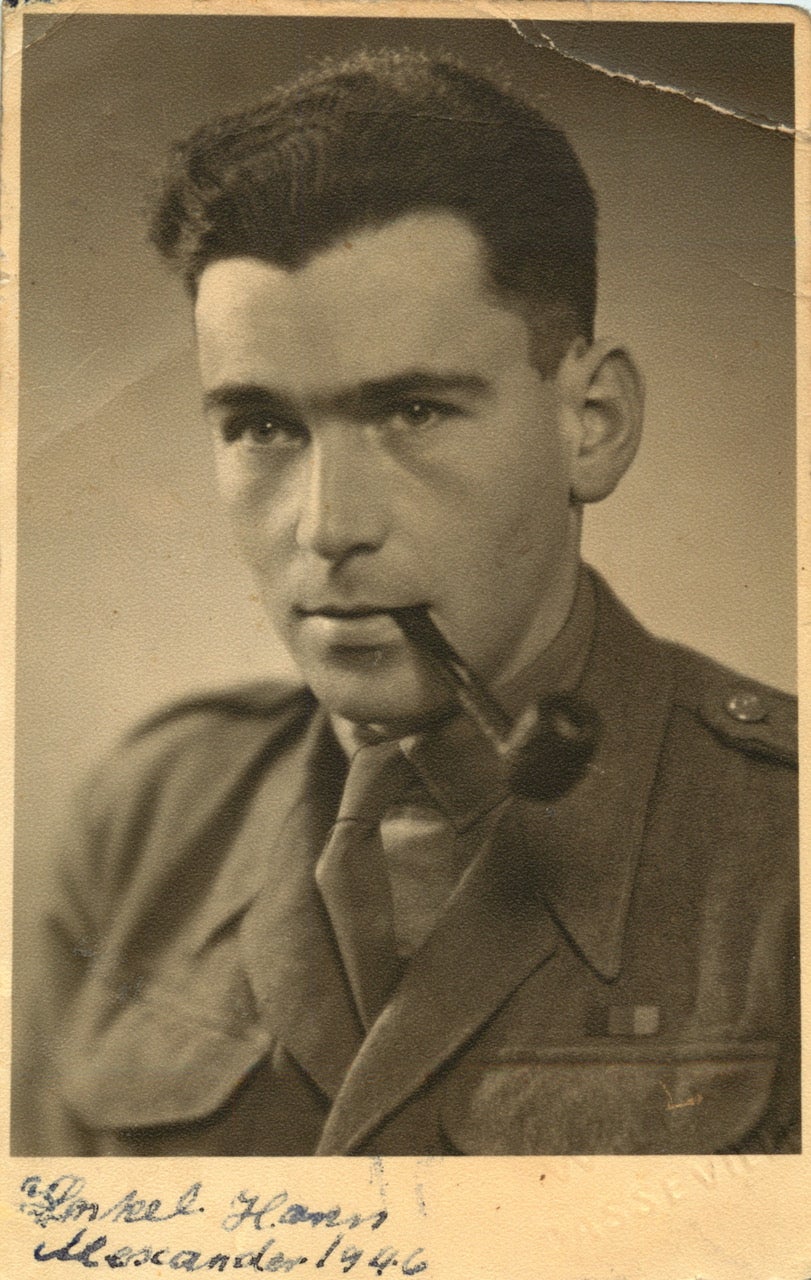
We talked about life at the villa. She said they moved there when she was eight years old in 1940 and left three-and-a-half years later when she was 11. She remembered it well. There were five children. Klaus was the oldest, then Heideraud, then Brigitte, followed by Hans-Jurgen and baby Annegret, who was born in 1943.
Brigitte had shared a bedroom with her eldest sister. They had dalmatians, hunting dogs and tortoises called Jumbo and Dillo. There was a slide in the garden that ended in a small pond, a sandpit, and a greenhouse where her mother kept exotic plants. Did she know that their father ran a prison camp? Yes, she did; men with black-and-white striped uniforms worked in their garden. She remembered how the Höss children once dressed up as prisoners, pinning black triangles and yellow stars to their shirts, chasing each other until their father saw them and told them to stop.
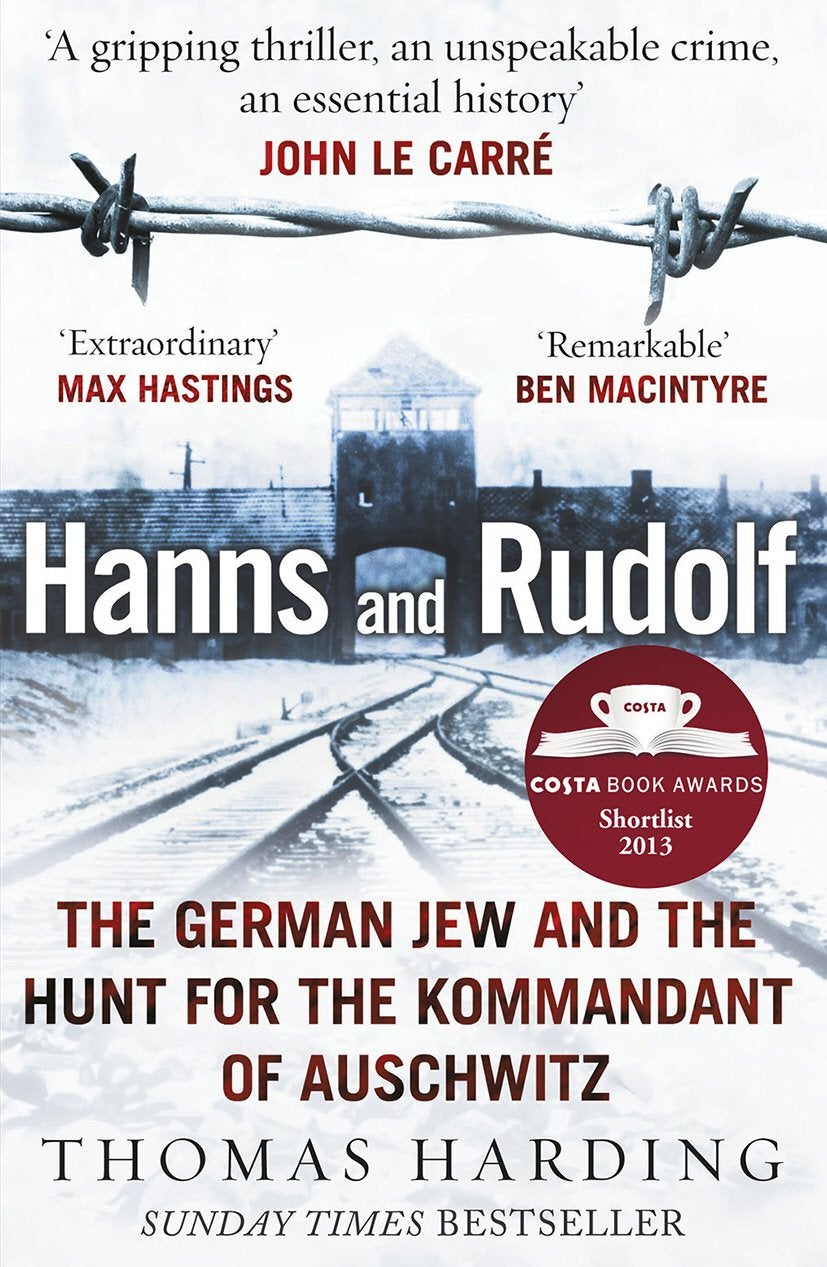
From what I had read about Auschwitz, people often said there was an unpleasant acrid odour in the air from bodies being burned. Brigitte was certain that she had not smelled anything like that, and she was adamant that she did not know about the gas chambers or the crematoria (the main killing centre was located two miles from the villa in a second larger camp known as Auschwitz II-Birkenau).
But what I really wanted to know was what he was like, her father, this man who had been responsible for over a million deaths.
Brigitte remembered him, not as a monster, but as a loving father. He asked about their days when he returned home. He played classical music on the gramophone and walked around the house smoking cigars. He read his children stories including “Hansel and Gretel”. They went to the kennels and petted his German shepherds. He took them out on the river behind their house and rowed them in a small boat. In the winter, she said, they went on sled rides and sang carols on the way to church.
But what was he like? I asked again. “He was the nicest, kindest father in the world,” she said. I paused. How was that possible? I asked.
It was her turn to pause. She told me how the killings were kept from her as a child, but she did not deny the murders had taken place. “There must have been two sides to him,” she said, “The side that I knew… and then the other side.” Brigitte said that she was convinced that her father was a sensitive man. “I’m sure he was sad inside,” she said. “It is just a feeling. The way he was at home, the way he was with us, sometimes he looked sad when he came back from work.” According to Brigitte, the commandant was capable of love; he was, she believed, disturbed by what she called his “work”.

This revulsion was confirmed by Rudolf Höss himself, who wrote in his memoirs that he often drank himself into a stupor, sometimes falling asleep next to his horses in the barn. Later, he was evaluated by an American psychologist who found that he was not only above-average intelligence but cognitively normal: in other words, he was not a psychopath.
Brigitte showed me the picture hanging above her bed; it was of a young man and woman dressed in country clothes. Her parents. After all these years, she still slept under the picture of perhaps the greatest mass murderer in history. I was shocked that Höss could be so loved by his daughter, even after learning the truth about his crimes.
It was confusing, which is why I was curious to know if the film would capture any of this “kind and loving father” that had been described to me. Would it present Rudolf Höss as the complex and conflicted man he was?
For much of the film, we see Rudolf (played by Christian Friedel), Ingrid (Sandra Huller), Brigitte (Nele Ahrensmeier), and the others – go about their life in the villa while an ominous cacophony of rumbling, clanking, and grinding takes place in the background. This suggested that murder was happening nearby on an industrial scale. The result is compelling and deeply disturbing.
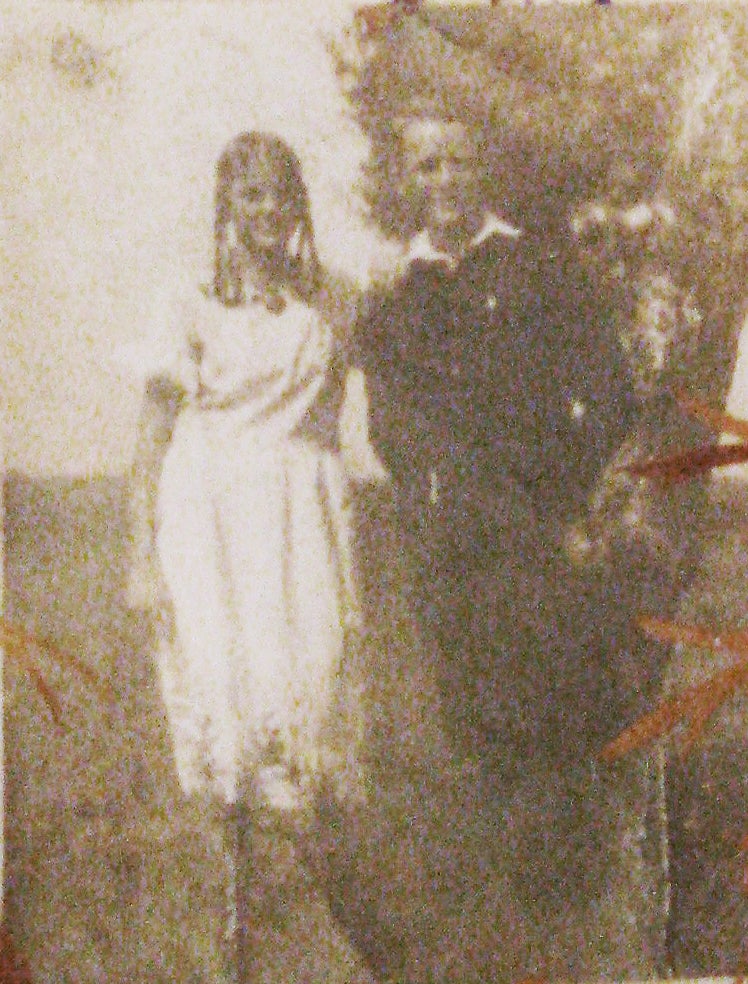
Also impressive is how the filmmakers accurately depict the historical details of the mundane; the clothes, dogs, pond, pergola, slide, picnic table – all captured in sharp sunlight and framed beautifully by the colour palettes of the time. But what really intrigued me was that the film portrayed Rudolf Höss as an almost emotionless technocrat.
This wasn’t like the person I had come to know. From everything his daughter had told me, it appeared that the commandant was an emotional and sane individual who – and this is the key point – chose to overcome his better instincts. Day after day. Year after year. A conclusion that is terrifying because it means that anyone could be capable of doing the same.
This ability for humans to make catastrophically bad choices, despite their feelings, is both fascinating and appalling. It would have been interesting to see what would have happened if this had been more of a focus in The Zone of Interest.
Because the warning from history is that those who commit the most wicked of crimes are not monsters, psychopaths, or demons. They are ordinary people who walk among us every day. They read their daughters fairytales and sit down to dinner with their family and ask them about their day.
Thomas Harding’s book ‘Hanns and Rudolf’ is published by Penguin Random House. You can follow him on Twitter @thomasharding





Join our commenting forum
Join thought-provoking conversations, follow other Independent readers and see their replies
Comments